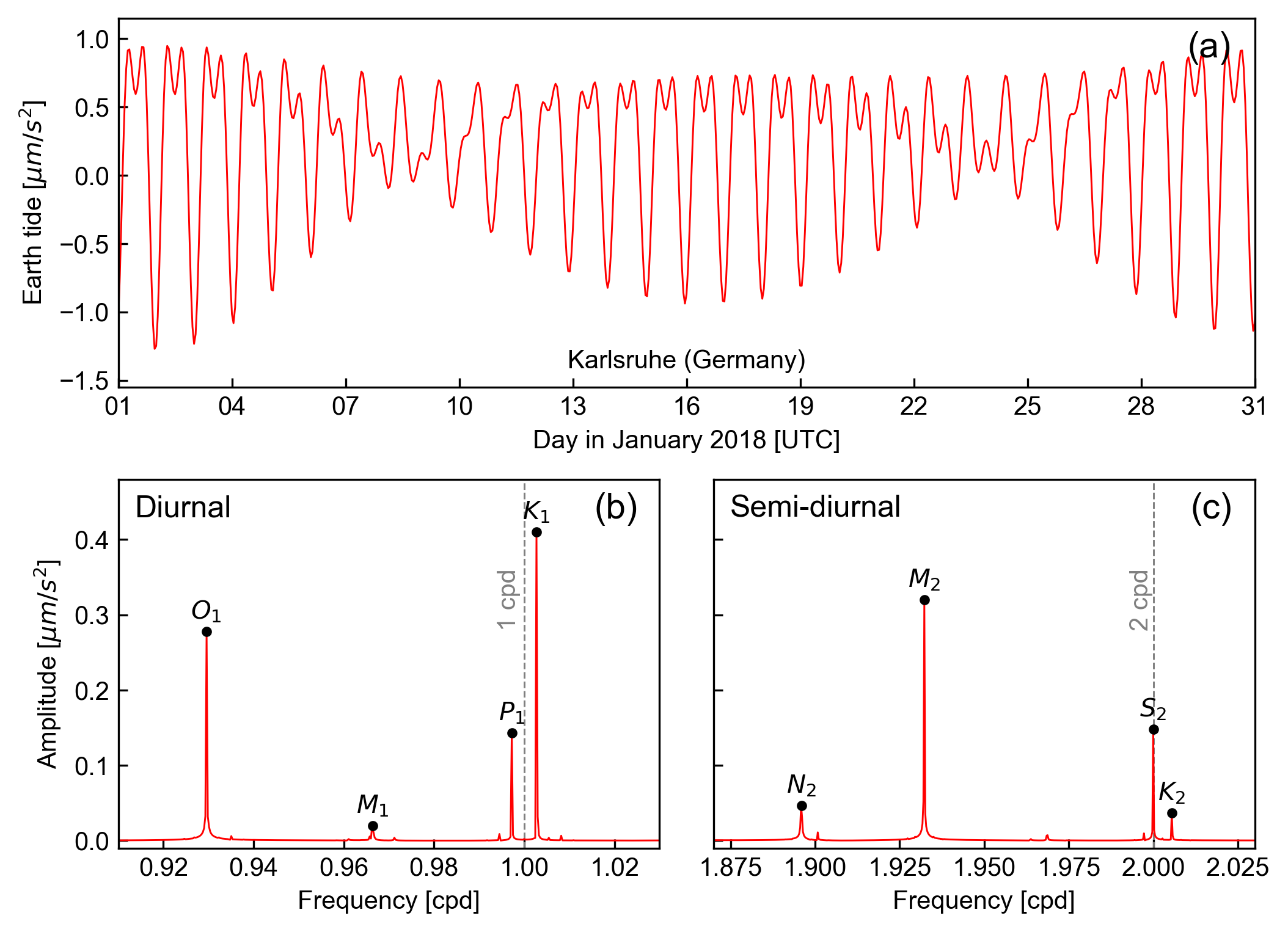PyGTide is a Python module that wraps around ETERNA PREDICT 3.4 which is compiled from Fortran into an executable using f2py. The original ETERNA PREDICT 3.3 was written by the late Prof. H.-G. Wenzel (Wenzel, 1996) in a mix of Fortran 77 and 90. This was updated by Kudryavtsev (2004) to include the latest tidal catalogue. Note that the original Fortran code was comprehensively revised in order to facilitate integration into Python. The original Fortran code for ETERNA PREDICT can be downloaded from the International Geodynamics and Earth Tide Service (IGETS).
There are two options:
- Download and install on your system (see below instructions)
- Via our online calculator: groundwater.app
Instructions:
-
Make sure the following packages are installed:
conda install numpy pandas requests git -
Download and install pygtide:
-
Linux or MacOS:
NOTE: Make sure suitable C++ and Fortran compilers are available.pip install pygtideNOTE by Roman Sermiagin (2024-07-11): Since
distutilswas removed in NumPy >= 1.26, the Meson build system was used. I could not create a correctmeson.buildscript for the assembly, after which the Fortran-modules would be added to theetpredmodule. Therefore, to install a package via Mason, you must first compile theetpredmodule in the build directory, and then install the package. This only works correctly with numpy 1.2.x, not 2.0.x. The previoussetup.pyandsetup.cfgsettings files have been moved to thebackupdirectory.pyproject.tomlwas added instead ofsetup.pypython -m numpy.f2py -c -m etpred src/etpred.f90 --build-dir build pip instal pygtide -
Windows:
Download the correct wheel for your Python version (available for 3.8 to 3.11) from the subfolder "windows" onto your system. Then navigate your Anaconda explorer to the download location and execute:pip install [wheel_name_depending_on_python_version]
-
-
Run tests:
python -c "import pygtide; pygtide.test(msg=True)"
- The internal database files can be updated as follows:
python -c "import pygtide; pygtide.update()"
- See
pygtide/tests.pyfor example usage:
from pygtide import predict_series
args = (-20.82071, -70.15288, 830.0, '2020-01-01', 6, 600)
series = predict_series(*args, statazimut=90, tidalcompo=8)
- Development version: This can be installed by downloading the Github repository and running:
pip install download_path.
Alternatively, in one step as:
pip install git+https://github.com/hydrogeoscience/pygtide.git
An updated user guide is currently in progress ...
If you use PyGTide, please cite the work as:
Rau, Gabriel C. (2018) hydrogeoscience/pygtide: PyGTid. Zenodo. https://doi.org/10.5281/zenodo.1346260
This image shows Earth tides calculated for the city Karlsruhe (Germany) in the year 2018.- Hartmann, T., and H.-G. Wenzel (1995), The HW95 tidal potential catalogue, Geophysical Research Letters, 22(24), 3553–3556, https://doi.org/10.1029/95GL03324.
- Kudryavtsev, S. M. (2004), Improved harmonic development of the Earth tide-generating potential, Journal of Geodesy, 17(12), 829-838, https://doi.org/10.1007/s00190-003-0361-2.
- Wenzel, H.-G. (1996), The nanogal software: Earth tide data processing package ETERNA 3.30, Bulletin d’Informations des Marées Terrestres, 124, 9425–9439.
- McMillan, T. C., and Rau, G. C., and Timms, W. A., and Andersen, M. S. (2019), Utilizing the impact of Earth and atmospheric tides on groundwater systems: A review reveals the future potential, Reviews of Geophysics, https://dx.doi.org/10.1029/2018RG000630.
PyGTide is released by Gabriel C. Rau and Tom Eulenfeld under the Mozilla Public License 2.0

